The growth in cyclists using a GPS bike computer or a smartphone with a GPS cycling app has been phenomenal in the last five years with new brands entering the GPS bike computer market and a lot of new advanced models from the established players.
With up to 30 models from the top four brands alone plus smartphone apps on top of that, we have listed and compared the top GPS bike computers from each brand and given our recommendation on each. There’s no doubt ride data and social platforms like Strava, Garmin Connect, Ride with GPS and others have contributed to the growth in the GPS bike computer market and there’s a section on each of those near the bottom of the article.
Before getting into the various brands there’s some cycling computer features and terminology that should be covered because while the base model GPS cycling computers are great for tracking your activities and sharing on social platforms to really get the most out of your riding, training and racing you will want to pair external sensors like power meters, heart rate monitors and cadence sensors to your device and that’s where things start getting more technical.
You can click any of these links to go straight to the section you want and there is a best buys / deals section at the end of the post as well.
Features and Terminology
Garmin
Wahoo Fitness
Polar
Magellan and Mio
Bryton Sport
Smartphone Apps
Best Deals
Features and Terminology
In the specifications and features of each cycling computer some or all of these features may be included.
Bluetooth Smart and / or ANT+
Basically there are two communication protocols for connecting external sensors and equipment wirelessly to cycling computers. ANT+ is the more popular as it was bought by Garmin in 2006 so all or most of their models since then have ANT+ and other manufacturers followed with one of the exceptions being Polar.
The other is Bluetooth Smart, it’s a variation of Bluetooth that uses less energy and is referred to as BLE (Bluetooth Low Energy) or BLE 4.0 or Bluetooth Smart. It’s all the same. One of the early adopters of Bluetooth Smart was Polar and in the app market iPhones use Bluetooth Smart.
Is one better than the other? Well that’s a whole other topic but to keep it simple you can’t really go wrong with either and some cycling computers now feature both protocols, and external devices like the Stages power meters broadcast on both, likewise the Wahoo TICKR heart rate strap we reviewed and some of the new smart indoor trainers receive and/or broadcast on both.
If the device doesn’t have Bluetooth Smart or ANT+ then it’s a GPS only device.
Maps / Mapping
Some of the GPS bike computers include mapping, some don’t. The ones that include them come packaged with their own maps or you can add open source maps like Openstreet maps. With the GPS bike computers that support maps and navigation you can upload a course and the cycling computer will give you directions either by voice or screen commands.
Strava Live Segments
If you use Strava then one of the considerations maybe a GPS bike computer or smartphone that’s capable of giving you live feedback on Strava Live Segments as you ride them. Not really my thing but some riders like it.
Smart Notifications
Some of the latest devices are capable of notifying you when texts, calls, alerts or emails come in when paired with your smart phone.
Smart Trainer Control
Trainer control is a feature where the resistance and intervals of some of the latest ANT+ FE-C smart trainers like Wahoo KICKR, Tacx Neo and Cyclops Hammer can be controlled via the bike computer.
Live Tracking
Let’s you stream your current location for others to keep track of you if needed.
Wireless
If the device is wireless capable then activities can be synced wirelessly to either app or desktop.
Other
A lot of the other features that will influence your GPS bike computer purchase are pretty self-explanatory and will include size, weight, screen colour and resolution. Whether the device has touch screen, water proofing, battery life and the list goes on. It’s really up to you what suits your bike and your own preference.
[adrotate group=”9″]
Garmin GPS Bike Computers
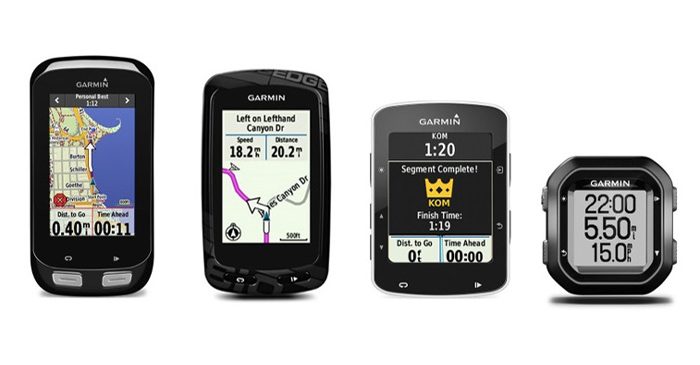
Garmin started the bike mounted GPS computer craze around 2007 with the Garmin Edge 205/305 then followed the Edge 705 that was used by Team Garmin−Chipotle in 2008. Late in 2009 the Garmin Edge 500 was released and it was a giant step forward in terms of technology to any other bike GPS computer in the market. In 2010 the Edge 800 then superseded by the Edge 810 late in 2012.
The Garmin Edge 1000 was released in the first half of 2014 and was the most advanced and the most expensive GPS bike computer at that time, then last year the Edge 520 was released which had all the same features plus some, and in a smaller form factor. Below is a brief description of some of the current Garmin models and a comparison table.
Garmin Edge 1000 is the biggest of the Garmin GPS bike computers and includes almost all of the possible features including Strava Live segments, Wi-Fi, smart notifications, route planner, mapping and of course ride recording data with ANT+ sensors.
Garmin Edge 810 is the oldest of the top three models listed here and is probably due to be replaced by the Garmin Edge 820 anytime. First released in 2013 it’s still a top of the range GPS bike computer.
Garmin Edge 520 is the newest and most advanced of the Garmin models. You can read our review of the Garmin Edge 520 for all the details.
Edge 25 and Edge 20 are entry level or small form factor gps bike computers that replaced the previous Edge 200. The Edge 25 has ANT+ capability, the Edge 20 does not.
There’s also Edge Explore 1000 and Edge Touring models available in some countries, I have left them out of the comparison as the Edge Explore 1000 is too similar to the Edge 1000 but not quite as high a specification. Likewise the Edge Touring is a model for the sake of an extra model. I would recommend either the Edge 1000 or Edge 520 respectively.
The Bike Lane recommendation for a Garmin GPS bike computer is the Garmin Edge 520 that we reviewed in March.
Garmin GPS Bike Computer Comparison
| GARMIN GPS COMPUTER COMPARISON | GARMIN EDGE 1000 | GARMIN EDGE 810 | GARMIN EDGE 520 | GARMIN EDGE 25 | GARMIN EDGE 20 |
|---|---|---|---|---|---|
| PHYSICAL AND PERFORMANCE | |||||
| Physical Dimensions | 58 x 112 x 20 mm | 51 x 93 x 25 mm | 49 x 73 x 21 mm | 40 x 42 x 17 mm | 40 x 42 x 17 mm |
| Display Size, WxH | 39 x 65 mm | 36 x 55 mm | 35 x 47 mm | 23 x 23 mm | 23 x 23 mm |
| Display Resolution, WxH | 240 x 400 pixels | 160 x 240 pixels | 200 x 265 pixels | 128 x 160 pixels | 128 x 160 pixels |
| Touchscreen | Yes | Yes | No | No | No |
| Color Display | Yes | Yes | Yes | No | No |
| Weight | 114.5 grams | 98 grams | 60 grams | 25 grams | 25 grams |
| Battery | USB Rechargeable | USB Rechargeable | USB Rechargeable | USB Rechargeable | USB Rechargeable |
| Battery Life | up to 15 hours | up to 17 hours | up to 15 hours | up to 8 hours | up to 8 hours |
| Water Rating | IPX7 | IPX7 | IPX7 | IPX7 | IPX7 |
| GPS-Enabled | Yes | Yes | Yes | Yes | Yes |
| GLONASS | Yes | No | Yes | Yes | Yes |
| Backlit Display | Yes | Yes | Yes | Yes | Yes |
| SENSORS | |||||
| ANT+ Heart Rate Strap | Yes | Yes | Yes | Yes | No |
| ANT+ Cadence / Speed | Yes | Yes | Yes | Yes | No |
| ANT+ Power Meter | Yes | Yes | Yes | No | No |
| ANT+ Trainer Control (FE-C) | No | No | Yes | No | No |
| Bluetooth Smart Heart Rate Strap | No | No | No | No | No |
| Bluetooth Smart Cadence / Speed | No | No | No | No | No |
| Bluetooth Smart Power Meter | No | No | No | No | No |
| FEATURES | |||||
| Power Meter Capable | Yes | Yes | Yes | No | No |
| Recording Interval | 1 Second | 1 Second | 1 Second | N/A | N/A |
| Wireless Connection | Yes | Yes | No | No | No |
| Smart Notifications | Yes | No | Yes | No | No |
| Customizable Screen | Yes | Yes | Yes | Yes | Yes |
| Display GPS & Sensor Data | Yes | Yes | Yes | Yes | Yes |
| Control Music Playback | No | No | No | No | No |
| Mount | 1/4 Turn (Garmin) | 1/4 Turn (Garmin) | 1/4 Turn (Garmin) | 1/4 Turn (Garmin) | 1/4 Turn (Garmin) |
| Replaceable Battery | No | No | No | No | No |
| Shock Proof | Yes | Yes | Yes | Yes | Yes |
| Altimeter | Barometric | Barometric | Barometric | GPS | GPS |
| Compass | GPS | GPS | GPS | N/A | N/A |
| Live Tracking | Yes | Yes | Yes | No | No |
| Electronic Gear Shift Display | Yes | Yes | Yes | No | No |
| Visual Maps | Yes | Yes | Yes | No | No |
| Temperature | Yes | Yes | Yes | No | No |
| Strava Live Segments | Yes | Yes | Yes | No | No |
| Automatic Sync | Yes | Yes | Yes | No | No |
| Accepts Data Cards | Yes | Yes | No | No | No |
| PRICE (head unit only) | GARMIN EDGE 1000 | GARMIN EDGE 810 | GARMIN EDGE 520 | GARMIN EDGE 25 | GARMIN EDGE 20 |
| Australia (AUD) | $749 | $549 | $449 | $229 | $169 |
| USA (USD) | $499 | $399 | $299 | $169 | $129 |
| UK (£) | £439 | £319 | £239 | £139 | £109 |
Wahoo Fitness GPS Bike Computers
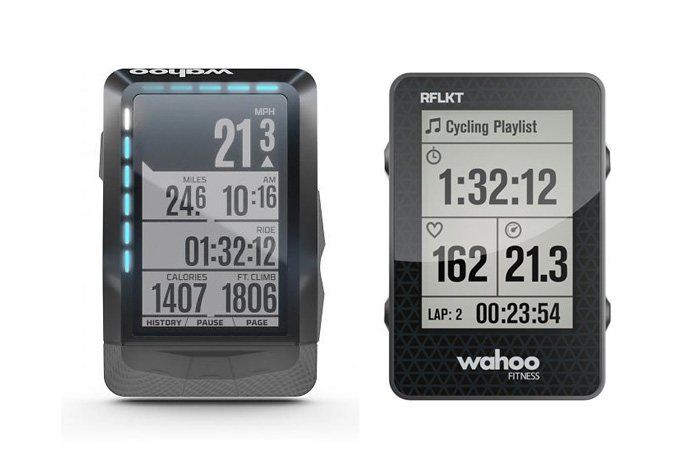
Wahoo Fitness have had the Wahoo RFLKT GPS bike computer in the market since mid 2012 and it’s bit different to other GPS bike computers in that it actually uses your smartphone to record data and the Wahoo RFLKT is simply displaying that data from your phone. Late in 2013 Wahoo announced the RFLKT+ that was initially only available via Kickstarter then later available for general sale. The RFLKT+ added an ANT+ bridge and barometric altimeter and temperature sensor.
Late last year the Wahoo ELEMNT GPS bike computer was announced and it’s aimed at taking on the Garmin range of GPS computers. More on that and the other Wahoo models below.
Wahoo RFLKT is an on bike display for your smartphone that is recording your ride details. One of the main benefits of the Wahoo RFLKT is it’s low price and that you can use your smartphone to record data but not have it sitting on your handlebars where it could get damaged. The RFLKT pairs using Bluetooth Smart and you can use the Wahoo Fitness app or CycleMeter app to customize the display and record your rides.
Wahoo RFLKT+ the RFLKT+ looks identical to the RFLKT but with the small + on the face plate. Underneath the difference is an ANT+ bridge and barometric altimeter and temperature sensor have been added, this means you can connect ANT+ sensors and record more accurate elevation data. The RFLKT+ has been discontinued now but is still available at some online bike stores.
Wahoo ELEMNT is a dedicated GPS enabled cycle computer that features ANT+, Bluetooth Smart (BTLE) and Wifi and will seamlessly connect with smartphone apps to configure the computer. The Elemnt is compatible with existing ANT+ sensors on your bike and because it features BTLE is also compatible with Wahoo Fitness own Kickr indoor trainers including the recent Kickr Snap.
The Bike Lane recommendation for a Wahoo Fitness GPS bike computer is the Wahoo ELEMNT, have a read of our Wahoo ELEMNT review.
Wahoo Fitness GPS Bike Computer Comparison
| WAHOO GPS COMPUTER MODEL | WAHOO ELEMNT | WAHOO RFLKT+ | WAHOO RFLKT |
|---|---|---|---|
| PHYSICAL AND PERFORMANCE | |||
| Physical dimensions (WxHxD) | 57.5 x 90.5 x 21.2 mm | 41 x 61 x 12.7 mm | 41 x 61 x 12.7 mm |
| Display size, WxH | 68.6mm (2.7″) diagonal | 29 x 41 mm | 29 x 41 mm |
| Display resolution, WxH | 128 x 128 pixels | 128 x 128 pixels | |
| Touchscreen | No | No | No |
| Color display | No | No | No |
| Weight | 98 grams (3.5 oz) | 57 grams (2.0 oz) | 57 grams (2.0 oz) |
| Battery | USB Rechargeable | CR2450 | CR2450 |
| Battery life | 17 hours | up to 12 months | up to 12 months |
| Water rating | IPX7 | IPX7 | IPX7 |
| GPS-Enabled | Yes | Yes | Yes |
| GLONASS | Yes | No | No |
| Backlit Display | Yes | Yes | Yes |
| SENSORS | |||
| ANT+ Heart Rate Strap | Yes | Yes (ANT+ Bridge) | No |
| ANT+ Cadence / Speed | Yes | Yes (ANT+ Bridge) | No |
| ANT+ Power Meter | Yes | Yes (ANT+ Bridge) | No |
| ANT+ Trainer Control (FE-C) | Yes | No | No |
| Bluetooth Smart Heart Rate Strap | Yes | No | No |
| Bluetooth Smart Cadence / Speed | Yes | No | No |
| Bluetooth Smart Power Meter | Yes | No | No |
| FEATURES | |||
| Power Meter Capable | Yes | Yes | No |
| Recording Interval | 1 Second | 1 Second | No |
| Wireless Connection | Yes | No | No |
| Smart Notifications | Yes | No | No |
| Customizable Screen | Yes | Yes | Yes |
| Display GPS & Sensor Data | Yes | Yes | No |
| Control Music Playback | No | No | No |
| Mount | 1/4 Turn (Unique) | 1/4 Turn (Unique) | 1/4 Turn (Unique) |
| Replaceable Battery | No | Yes | Yes |
| Shock Proof | Yes | No | No |
| Altimeter | Barometric | No | No |
| Compass | Magnetic | No | No |
| Live Tracking | Yes | No | No |
| Electronic Gear Shift Display | Yes | No | No |
| Visual Maps | Yes | No | No |
| Temperature | Yes | No | No |
| Strava Live Segments | No | No | No |
| Automatic Sync | Yes | No | No |
| Accepts Data Cards | No | No | No |
| PRICE (head unit only) | WAHOO ELEMNT | WAHOO RFLKT+ | WAHOO RFLKT |
| Australia (AUD) | $499 | $169 | $119 |
| USA (USD) | $329 | n/a | $79 |
| UK (£) | £279 | n/a | £59 |
[adrotate group=”14″]
Polar GPS Bike Computers
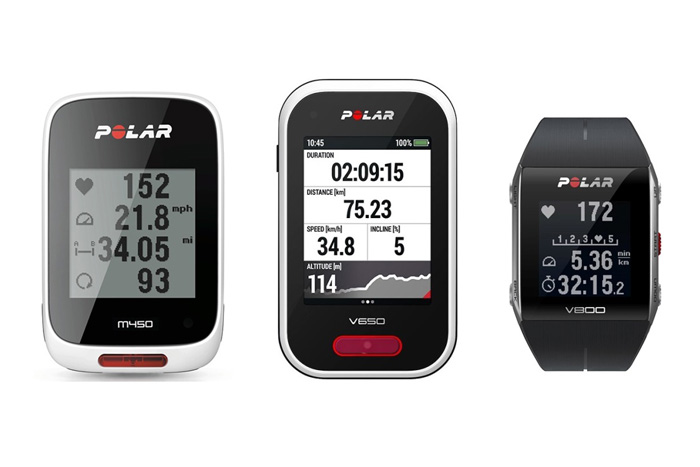
The Polar company was founded in Finland in the late 70’s patenting the first wireless heart rate monitors for cross country skiers, then later added bike computers to its product range in the early ’90 before most of the other brands compared here were even in existence. 2014 saw Polar launch the Polar V650 as their first GPS enabled bike computer then last year the smaller Polar M450 was added.
As Polar V800 multi-sport wrist watch has been added as a comparison as it includes most of the cycling functionality of the other two models and can also be used while swimming and running.
Polar M450
The Polar M450 is the newest of the two bike mounted computers and has the smallest form factor. It’s got impressive battery life, can use be used with Bluetooth Smart sensors (no ANT+) and small form factor. Both Polars have quarter turn mounts but they are different to Garmin and Wahoo.
Polar V650
The Polar V650 is bigger than the M450 and has more features like mapping, colour screen, uses ANT+ and Bluetooth Smart sensors. The Polar V650 is competitively priced compared to similar GPS computers.
You can read our review of the Polar V650.
Polar V800
The Polar V800 is primarily a watch that can be used for a triathlon and endurance sports due to it being worn on you rather than the bike, start with it on during the swim and it will record everything there and also record via Bluetooth Smart sensors on your bike as well. It’s probably too expensive if you only bike but this would be the perfect choice for a multi sport athlete.
Last month Polar announced that as part of the GoPro Developer Program the Polar V800 will soon be able to directly record metrics from the V800 watch to the GoPro starting with speed, distance, altitude and heart rate data. Hopefully cadence and power recording capabilities will be added later. The V800 will also be able to contol the GoPro as well.
The new GoPro features will make the Polar V800 popular with more than just endurance athletes and you can see some of the applications in this Polar video.
The Polar Flow app and Polar Polar FlowSync can be used to update all three of these devices.
The Bike Lane recommendation for a Polar GPS computer is the Polar M450, great form factor and features.
Polar GPS Bike Computer Comparison
| POLAR GPS COMPUTER COMPARISON | POLAR V650 | POLAR M450 | POLAR V800 |
|---|---|---|---|
| PHYSICAL AND PERFORMANCE | |||
| Physical Dimensions | 61 x 106 x 16 mm | 53 x 78 x 14.0 mm | 12.7 mm thickness |
| Display Size, WxH | 44 x 58 mm | 34.65 x 34.65 mm | |
| Display Resolution, WxH | 240 x 320 pixels | 128 x 128 pixels | 128 x 128 pixels |
| Touchscreen | Yes | No | No |
| Color Display | Yes | No | No |
| Weight | 122 grams | 51 grams | 79 grams |
| Battery | USB Rechargeable | USB Rechargeable | USB Rechargeable |
| Battery Life | 10 hours | 16 hours | 13 hours |
| Water Rating | IPX7 | IPX7 | 30 metres |
| GPS-Enabled | Yes | Yes | Yes |
| GLONASS | No | No | No |
| Backlit Display | Yes | Yes | Yes |
| SENSORS | |||
| ANT+ Heart Rate Strap | No | No | No |
| ANT+ Cadence / Speed | No | No | No |
| ANT+ Power Meter | No | No | No |
| ANT+ Trainer Control (FE-C) | No | No | No |
| Bluetooth Smart Heart Rate Strap | Yes | Yes | Yes |
| Bluetooth Smart Cadence / Speed | Yes | Yes | Yes |
| Bluetooth Smart Power Meter | Yes | Yes | Yes |
| FEATURES | |||
| Power Meter Capable | Yes | Yes | Yes |
| Recording Interval | 1 Second | 1 Second | 2 Second |
| Wireless Connection | Yes (via Polar Flow) | Yes (via Polar Flow) | Yes (via Polar Flow) |
| Smart Notifications | No | No | Yes |
| Customizable Screen | Yes | Yes | Yes |
| Display GPS & Sensor Data | Yes | Yes | Yes |
| Control Music Playback | No | No | No |
| Mount | 1/4 Turn (Unique) | 1/4 Turn (Unique) | N/A |
| Replaceable Battery | No | No | No |
| Shock Proof | Yes | Yes | Yes |
| Altimeter | Barometric | Barometric | Barometric |
| Compass | GPS | N/A | Magnetic |
| Live Tracking | No | No | No |
| Electronic Gear Shift Display | No | No | No |
| Visual Maps | Yes (Open Street) | No | No |
| Temperature | No | Yes | Yes |
| Strava Live Segments | No | No | No |
| Automatic Sync | No | No | No |
| Accepts Data Cards | No | No | No |
| PRICE (head unit only) | POLAR V650 | POLAR M450 | POLAR V800 |
| Australia (AUD) | $389 | $269 | $629 |
| USA (USD) | $249 | $169 | $449 |
| UK (£) | £169 | £119 | £339 |
Magellan and MIO GPS Bike Computers
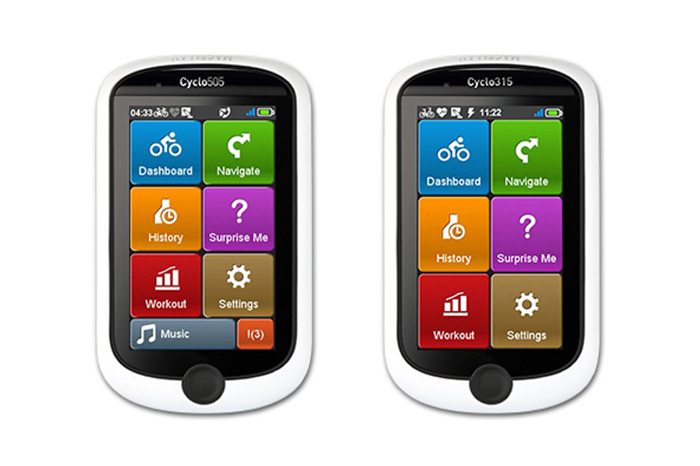
Magellan and Mio are owned by parent company MiTAC who started initially producing GPS navigation units in cars. The bike GPS computers are branded Mio or Magellan depending on which country you live in and to complicate things some models are available in some countries and not others.
The Magellan / Mio Cyclo 505 unit was first to market with a lot of the features like Di2 support, smart notifications, WiFi, music control that you are now seeing in the top end Garmins and the new Wahoo Elemnt.
Mio Cyclo 505 and 500
The Mio Cyclo 505 and 500 are similar units it’s just the 500 only has ANT+ whereas the 505 has both ANT+ and Bluetooth Smart. Introduced in 2014 the Cyclo 505 is the top of the line Mio or Magellan unit and was the first gps bike computer to feature Di2 integration, WiFi, ANT+ trainer control, Voice instructions and music control and phone text and call notifications.
The Mio Cyclo 505 HC is the same as the Cyclo 505 with an ANT+ Heart rate monitor and Speed and Cadence Sensor included.
The Mio 500 and 505 have just had a software update (V4.4 May 2016) that allows users with a Strava premium account to use Strava Live Segments.
Mio Cyclo 315 and 310
The Mio Cyclo 315 and 310 are similar to the 500 series just with a lower spec. The Cyclo 315 and 310 are not sold in Australia and it appears just the 315, not the 310 is sold in USA.
The Mio Cyclo 315 HC is the same as the Cyclo 315 with an ANT+ Heart rate monitor and Speed and Cadence Sensor included and the Mio Cyclo 315 and 310 have also had the same software update enabling Strava Live Segments.
Magellan and Mio GPS Bike Computer Comparison
| MAGELLAN / MIO GPS COMPUTER COMPARISON | CYCLO 505 | CYCLO 500 | CYCLO 315 | CYCLO 310 |
|---|---|---|---|---|
| PHYSICAL AND PERFORMANCE | ||||
| Physical Dimensions | 61 x 103 x 19.6 mm | 61 x 103 x 19.6 mm | 61 x 103 x 19.6 mm | 61 x 103 x 19.6 mm |
| Display Size, WxH | 40 x 66 mm (3″ diagonal) | 40 x 66 mm (3″ diagonal) | 40 x 66 mm (3″ diagonal) | 40 x 66 mm (3″ diagonal) |
| Display Resolution, WxH | 240 x 400 pixels | 240 x 400 pixels | 240 x 400 pixels | 240 x 400 pixels |
| Touchscreen | Yes | Yes | Yes | Yes |
| Color Display | Yes | Yes | Yes | Yes |
| Weight | 129 grams | 129 grams | 129 grams | 129 grams |
| Battery | USB Rechargeable | USB Rechargeable | USB Rechargeable | USB Rechargeable |
| Battery Life | up to 12 hours | up to 12 hours | up to 12 hours | up to 12 hours |
| Water Rating | IPX7 | IPX7 | IPX7 | IPX7 |
| GPS-Enabled | Yes | Yes | Yes | Yes |
| GLONASS | No | No | No | No |
| Backlit Display | Yes | Yes | Yes | Yes |
| SENSORS | ||||
| ANT+ Heart Rate Strap | Yes | No | Yes | No |
| ANT+ Cadence / Speed | Yes | No | Yes | No |
| ANT+ Power Meter | Yes | No | No | No |
| ANT+ Trainer Control (FE-C) | Yes | No | No | No |
| Bluetooth Smart Heart Rate Strap | Yes | Yes | No | No |
| Bluetooth Smart Cadence / Speed | Yes | Yes | No | No |
| Bluetooth Smart Power Meter | Yes | No | No | No |
| FEATURES | ||||
| Power Meter Capable | Yes | No | No | No |
| Recording Interval | 1 Second | N/A | N/A | N/A |
| Wireless Connection | Yes | Yes | No | No |
| Smart Notifications | Yes | Yes | No | No |
| Customizable Screen | Yes | Yes | Yes | Yes |
| Display GPS & Sensor Data | Yes | Yes | Yes | Yes |
| Control Music Playback | Yes | Yes | No | No |
| Mount | 1/4 Turn (Unique) | 1/4 Turn (Unique) | 1/4 Turn (Unique) | 1/4 Turn (Unique) |
| Replaceable Battery | No | No | No | No |
| Shock Proof | Yes | Yes | Yes | Yes |
| Altimeter | Barometric | Barometric | Barometric | Barometric |
| Compass | GPS | GPS | GPS | GPS |
| Live Tracking | Yes | No | No | No |
| Electronic Gear Shift Display | Yes | No | Yes | No |
| Visual Maps | Yes | Yes | Yes | Yes |
| Temperature | Yes | Yes | Yes | Yes |
| Strava Live Segments | Mio | Mio | Mio | Mio |
| Automatic Sync | Yes | Yes | No | No |
| Accepts Data Cards | No | No | No | No |
| PRICE (head unit only) | CYCLO 505 | CYCLO 500 | CYCLO 315 | CYCLO 310 |
| Australia (AUD) | $399 | $379 | n/a | n/a |
| USA (USD) | $429 | n/a | $329 | n/a |
| UK (£) | £369 | £349 | £279 | £249 |
Bryton GPS Bike Computers
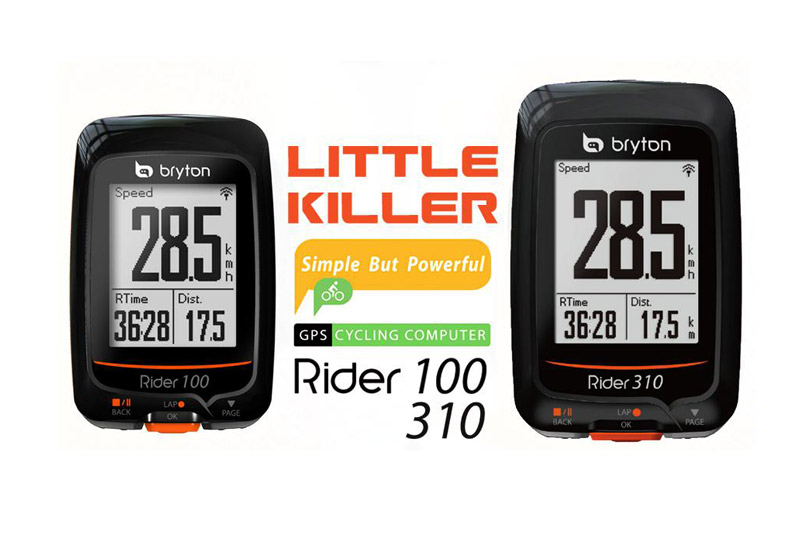
Taipei based Bryton was founded in 2009 and has been building its presence and product lineup in the cycling, multisport and outdoor adventure markets with a range of Rider GPS bike computers and Amis and Cardio series GPS sports watches.
Two of the current models are the Rider 310 that was released earlier this year and features GPS capability, connects with ANT+ sensors including heart rate, power meter, speed and cadence and has IPX7 waterproofing and the Bryton auto start/stop feature.
The Rider 100 is smaller than the Rider 310 but still packs impressive features including GPS tracking, ANT+ speed, cadence and heart rate as well as IPX7 waterproofing.
The two new models to be released in the coming months are the Bryton Rider 530 and 330.
[adrotate group=”15″]
Smartphones as GPS Bike Computers
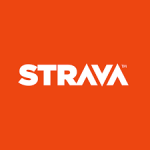 Strava is one of the most popular and functional cycling apps and is available for iPhone and Android phones. The Strava app Records your ride including distance, elevation, times, strava segments and you can use bluetooth smart sensors with iPhones and both bluetooth smart and ANT+ sensors with Android phones. The Strava app and platform has social functionality that allows you to follow other riders, join clubs and compete on leader boards and comment and give kudos on other riders achievements.
Strava is one of the most popular and functional cycling apps and is available for iPhone and Android phones. The Strava app Records your ride including distance, elevation, times, strava segments and you can use bluetooth smart sensors with iPhones and both bluetooth smart and ANT+ sensors with Android phones. The Strava app and platform has social functionality that allows you to follow other riders, join clubs and compete on leader boards and comment and give kudos on other riders achievements.
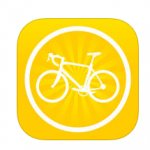 Cyclemeter is an iPhone only app that tracks your cycling and running activities with similar functionality to Strava but without all the social and segment aspect, you don’t need to create online accounts or pay subscription fees. The app includes notifications including voice commands, as a stand alone app or in combination with the Wahoo RFLKT it’s probably the ultimate in phone based apps for cycling.
Cyclemeter is an iPhone only app that tracks your cycling and running activities with similar functionality to Strava but without all the social and segment aspect, you don’t need to create online accounts or pay subscription fees. The app includes notifications including voice commands, as a stand alone app or in combination with the Wahoo RFLKT it’s probably the ultimate in phone based apps for cycling.
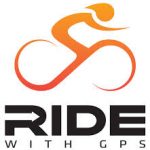 Ride with GPS is another app that tracks your activities recording all your data including intergration with bluetooth smart sensors as well as functionality to preplan and store your routes. Voice enabled directions can be used as well. Also check out the desktop site at ridewithgps.com, it’s a great platform for plotting race circuits and viewing elevation data. The app is available for iPhone and Android.
Ride with GPS is another app that tracks your activities recording all your data including intergration with bluetooth smart sensors as well as functionality to preplan and store your routes. Voice enabled directions can be used as well. Also check out the desktop site at ridewithgps.com, it’s a great platform for plotting race circuits and viewing elevation data. The app is available for iPhone and Android.
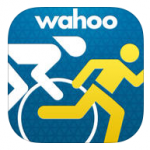 Wahoo Fitness app is essential if you’re using a Kickr or Kickr Snap as you can control the trainers with this app as well as record cycling activities similar to the other apps above. The Wahoo Fitness app connects with bluetooth smart sensors including power meters, has voice commands and 13 different data screens. You can share activities to Strava, Ride with GPS, Training Peaks and other platforms.
Wahoo Fitness app is essential if you’re using a Kickr or Kickr Snap as you can control the trainers with this app as well as record cycling activities similar to the other apps above. The Wahoo Fitness app connects with bluetooth smart sensors including power meters, has voice commands and 13 different data screens. You can share activities to Strava, Ride with GPS, Training Peaks and other platforms.
SUPPORT THIS SITE
Did you like this article and want to help support the site? Do you need a new cycling computer?
These links below take you to the GPS cycling computer page for Chain Reaction, Wiggle and ProBikeKit where you will find some fantastic discounts.
Chain Reaction Cycles
Wiggle Cycles
ProBikeKit
Thanks!

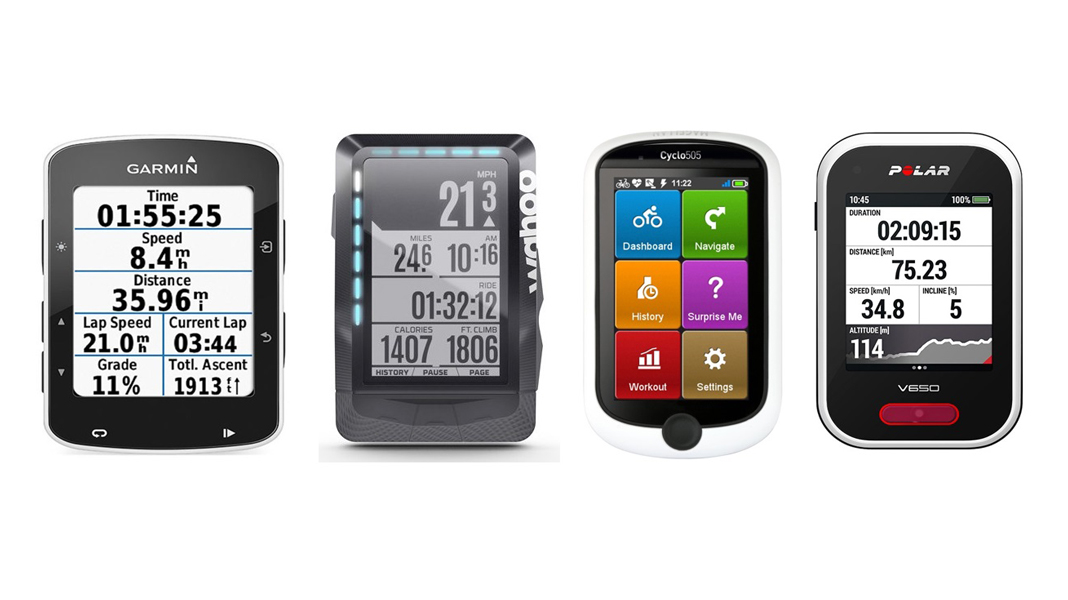
The Magellan Cyclo 505 in NZ and AU does not have the V4.4 firmware update available required for Strava Live Segments 29/11/2016. No indication when/if it will be released according to support.
This article swayed me to purchase the Magellan Cyclo 505 because I wanted the live segment function and it was cheaper than the Garmin 520. Very disappointed once I contacted support to be told it wasn’t an option in Australia.
Magellan need to sort there **** out. Phoned magellan support was told the same thing. When will the update be made available to nz and aus so people can start using strava live on there devices. Poor service, should have bought a Garmin!!!!!!!
#comeonmageelan
Saw today that the update is now available!
How about Lezyne?